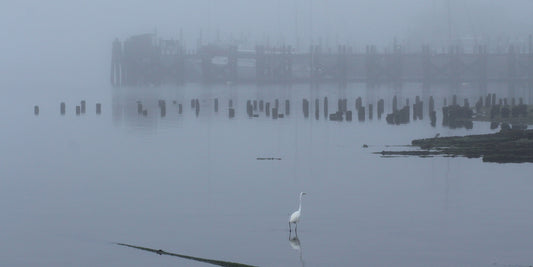The birds keep migrating, so the bird counters keep watching. Since the beginning of September, the New Haven Bird Club has been posting dedicated hawk watchers on the top of the rise at Lighthouse Point Park, scanning the skies.
One afternoon during a previous year’s watch, I found hawk enthusiast Lynn James parked in a lawn chair in front of her car with a pair of binoculars, an official tally sheet and some snacks. She’d been there for six hours already, since about 7 a.m., through a rainy morning that had finally turned warm, bright and breezy. In the near distance, the green waters of New Haven Harbor were halved by the shadows of clouds, and whitecaps frothed on the surface.
sponsored by
Wind is a good thing for autumn hawk watching if it’s coming from the northwest, giving the birds a push in the right direction. Better still, if the wind follows “blocking weather” such as storms or unfavorable winds, some birds will have waited it out, causing traffic to build up and many birds to come through at once. Even in less optimal conditions, the topography of Lighthouse Point makes it a prime spot for counting hawks. After following the coastline, all but the strongest fliers temporarily lose their courage when they see the expanse of New Haven Harbor, says watch coordinator Steve Mayo. “This is no Delaware Bay, but it’s big enough for the hawks to be a little intimidated,” Mayo says. Here, they’ll pause to contemplate their next move.
This day’s prevailing winds were from the south, and things were relatively quiet. Still, James had counted osprey, sharp-shinned hawks, American kestrels, merlins and one unidentified raptor passing through, and she’d seen many more gulls and smaller birds. It’s possible to sit for up to an hour without seeing much at all, but James seemed perfectly content to wait. “I like being outdoors, I love the birds, I like finding
Not long after I arrived, a truck pulled up, and retired New Haven park ranger Dan Barvir got out to join James on the job. Almost immediately, he pointed out a female peregrine falcon hovering on the breeze. We all raised our binoculars to watch her. A few minutes later, a little kestrel homed in on a nearby sapling, then hopped to the next and the next, as if leap-frogging tree-to-tree would give her a chance against the headwind.
“Now here comes its counterpart,” Barvir said, pointing to another bird headed our way—“the faster, more aggressive merlin.” Several times James and Barvir pointed out a “sharpie”—a sharp-shinned hawk—doing its flap-flap-glide locomotion. A juvenile encountered one of the ubiquitous gulls and took a sudden swerve. Most of these sharpies are young birds who haven’t seen that daunting stretch of wide-open water before, Barvir says. The adults, who already know how to handle migration, will pass through later in the season.
We watched an osprey with its long, elegant wings float above the treeline, its white throat lit by the facing sun. All of the birds were fighting a stiff head wind coming off the water. On the ground, it whipped our hair and played at the edges of our jackets.
Most of the watchers are members of the New Haven Bird Club. The group sends its data on to the Hawk Migration Association of North America for compilation. In September 2020, 17 species of raptors were counted passing through, including 567 osprey, 796 sharp-shinned hawks and 491 American kestrels—the birds appearing in the greatest numbers. But these counts are low compared to numbers surpassing 10,000 for September alone in some years in the 1980s and ’90s. The cause of the decline differs for different species, Mayo says. For example, the number of sharp-shinned hawks at Lighthouse has fallen due to a drop in the number of smaller birds, their main food source. Kestrels have also experienced a decline, Mayo says, due to pesticides, development and forest fragmentation, parasitic diseases, even feral cats. Birds that can better adapt—eagles, osprey, peregrine falcons, Cooper’s hawks—are doing better.
Back on the Lighthouse knoll, James remarked it would be nice to add a bald eagle to her list. Almost on cue, Barvir cried out, “Bald eagle!” We turned east to see the giant raptor cruising like an aircraft carrier with its flat, broad wings. Two osprey flew agitated circles as the eagle glared down at their territory. It took its time turning north and disappeared behind the treeline.
Raptors aren’t the only birds migrating across the Lighthouse Park lawn. When I stopped by two days later, counter Dana Campbell reported that she and several others had taken turns leaving their post to check on a “fallout” of warblers that had settled in the nearby woods rather than fly in the rain. The find included a Connecticut warbler—ironically, rarely spotted in Connecticut. Campbell had also counted about 100 raptors passing over early in the morning, before the rain. Later that weekend, with perfect conditions, about 140 hawks of several species passed through in the morning and early afternoon, with a bonus sighting of a rare red-headed woodpecker and “well over 2,000 blue jays,” Mayo reported. At the same time, dragonflies and butterflies are making their way south.
Other areas in the state are also known as good sites to view the fall migration. Quaker Ridge at the Greenwich Audubon Center is a prime hawk watching site; Hammonasset Beach in Madison and, closer to New Haven, Sandy Point in West Haven are good spots to watch for other species. There’s still plenty of time to catch these migrations for yourself. The Lighthouse hawk watchers will be out in almost any weather throughout October and November—with fingers crossed for that northwest wind.
Lighthouse Point Park
2 Lighthouse Rd, New Haven (map)
Daily 7am-sunset
www.newhavenct.gov/gov/depts/parks/…
Written by Kathy Leonard Czepiel. Images 1, 3 (featuring Lynn James) and 4 (featuring James and Dan Barvir) photographed by Kathy Leonard Czepiel. Images 2 and 5, of a red-tailed hawk and kestrel, photographed by Abby Sesselberg. This updated story was originally published on October 9, 2020.








